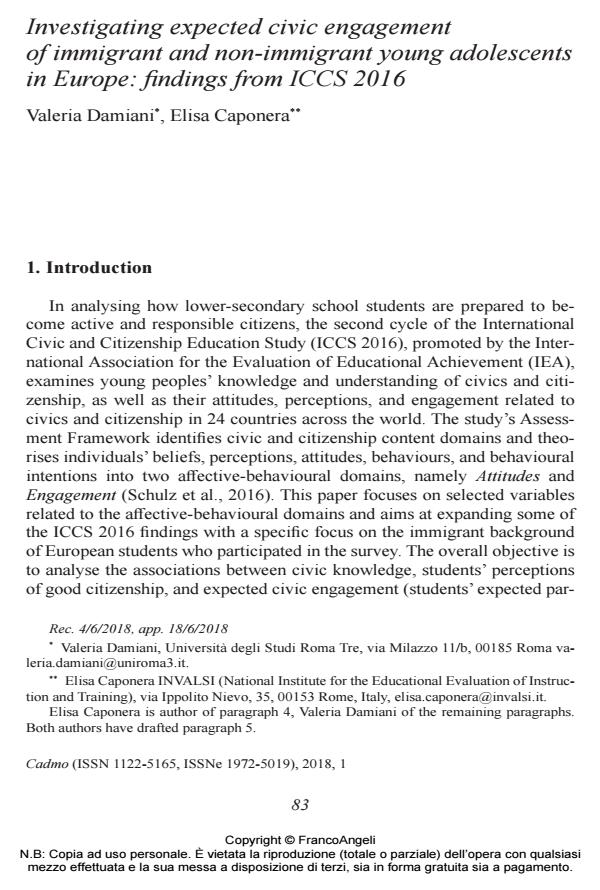Investigating expected civic engagement of immigrant and non-immigrant young adolescents in Europe: findings from ICCS 2016
Journal title CADMO
Author/s Valeria Damiani, Elisa Caponera
Publishing Year 2018 Issue 2018/1
Language English Pages 20 P. 83-102 File size 218 KB
DOI 10.3280/CAD2018-001010
DOI is like a bar code for intellectual property: to have more infomation
click here
Below, you can see the article first page
If you want to buy this article in PDF format, you can do it, following the instructions to buy download credits

FrancoAngeli is member of Publishers International Linking Association, Inc (PILA), a not-for-profit association which run the CrossRef service enabling links to and from online scholarly content.
This paper aims at expanding some findings of the International Civic and Citizenship Education Study (ICCS 2016), analysing the associations between European immigrant and non-immigrant students’ civic knowledge, perceptions of good citizenship, and expected civic engagement (students’ expected participation in legal/illegal activities and in electoral/political participation) using structural equation modelling. Descriptive analyses are also presented to investigate the extent to which immigrant students’ perceptions of different aspects of citizenship and their expected civic engagement differ from their native-born counterparts. Result show that immigrant adolescents who took part in the survey seem to prefer a type of engagement that does not trust the traditional methods related to electoral participation, but is willing to be committed to other forms of participation, either in political or legal activities, or even in illegal protests. The structural equation model highlighted no difference in the relation between immigrant and non-immigrant students’ perceptions of citizenship and their civic engagement, stressing the relevance that formal education plays in fostering students’ civic engagement during adulthood.
Keywords: ICCS 2016; immigrant students; civic engagement; citizenship perceptions; Europe.
- Unge medborgere i en ny tid Sanna Ørsjødal Brattland, Oddveig Storstad, pp.34 (ISBN:9788215073927)
Valeria Damiani, Elisa Caponera, Investigating expected civic engagement of immigrant and non-immigrant young adolescents in Europe: findings from ICCS 2016 in "CADMO" 1/2018, pp 83-102, DOI: 10.3280/CAD2018-001010